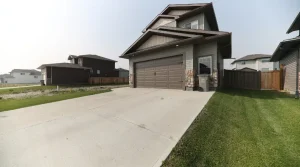If you own property, are a developer, or run a business, it’s essential to understand the rules that govern how land is used and developed. Two fundamental rules to know are zoning and paving regulations. These rules tell you what you can do with your land, how you can do it, and what standards you need to follow to keep things safe and functional. This blog will explain what zoning regulations are, give an overview of common zoning rules, show how paving regulations are related to zoning, and discuss why knowing both is important for your projects.
If you’re in Hackensack, New Jersey, and seeking a reliable paving company, don’t hesitate to give us a call. Our friendly staff is ready to address your inquiries promptly.
What Are Zoning Regulations?
Zoning regulations are rules made by local governments to control how land is used in different areas. These rules divide a city or town into zones, and each zone has specific rules aboutwhat types and methods of construction are possible they can be used. The main goals of zoning are to ensure that the area develops in an orderly way, to keep property values stable, and to protect the community’s health and safety.
Zoning regulations usually divide land into different types, like residential, commercial, industrial, and agricultural. Each type has its rules about what can be done there, how tall buildings can be, and how far they must be from property lines. For example, a residential zone might only allow houses, while a commercial zone might allow shops and office buildings. By clearly defining what can be done in each zone, zoning regulations help prevent problems like having factories too close to homes.
Zoning Regulations Overview
Zoning regulations are not uniform; they vary widely depending on the specific goals, needs, and priorities of a community. However, most zoning ordinances share some common elements:
- Zoning Districts: Cities and towns are divided into different zones or districts, each set aside for specific uses, like homes (residential), businesses (commercial), or factories (industrial).
- Land Use Regulations: These rules decide what types of activities or buildings are allowed in each zone. For example, you can’t have businesses in residential zones, and industrial zones might limit housing to protect people from noise and pollution.
- Building Regulations: Zoning laws also control the size and shape of buildings, such as how tall they can be, how much of the land they can cover, and the floor area they can use. These rules make sure buildings fit well with their surroundings and don’t overcrowd the area or strain the infrastructure.
- Setback Requirements: Setbacks are the minimum distances required between buildings and property lines, streets, or other buildings. These requirements help keep open spaces, provide light and air, and reduce the risk of fires spreading between buildings.
- Density Controls: These rules limit how many buildings or homes can be built on a certain amount of land. Density controls help manage how crowded an area becomes, reduce traffic jams, and limit the strain on public services and infrastructure.
- Special Use Permits: Some land uses might need special permission from local authorities, especially if they don’t fit the usual zoning rules. Examples include schools, hospitals, and churches in mostly residential areas.
How Paving Regulations Intersect with Zoning
Zoning regulations deal with how land is used and developed, while paving regulations focus on the building and upkeep of paved surfaces like driveways, parking lots, sidewalks, and roads. These rules are important because they help keep vehicles and people moving safely, control water runoff, and protect the environment. Paving regulations often overlap with zoning regulations in some important areas:
- Parking Requirements: Zoning laws frequently include provisions specifying how many parking spots are necessary for various kinds of constructions. Paving regulations ensure these parking areas are designed and constructed to meet standards for size, accessibility, drainage, and durability. Properly designed parking lots reduce traffic congestion and enhance safety.
- Driveway Regulations: The placement, width, and design of driveways are typically governed by both zoning and paving regulations. Zoning laws may determine where a driveway can be located on a property to ensure safety and accessibility, while paving regulations dictate the materials and construction methods to be used, ensuring durability and proper drainage.
- Stormwater Management: Both zoning and paving regulations often include requirements for managing stormwater runoff to prevent flooding, erosion, and water pollution. Zoning regulations might require the use of permeable surfaces, green roofs, or other sustainable practices, while paving regulations provide the technical specifications for implementing these solutions, such as grading, drainage, and the use of permeable paving materials.
- Accessibility Standards: Compliance with zoning laws that enforce accessibility standards is crucial for ensuring that pathways, parking lots, and other paved areas are accessible to people with disabilities. Paving regulations must meet requirements set forth by the Americans with Disabilities Act (ADA) and other relevant standards, ensuring that all individuals have safe and convenient access to buildings and public spaces.
Why Understanding Both is Crucial for Property Owners, Developers, and Businesses
Navigating the complexities of zoning and paving Rules are crucial for businesses, developers, and property owners for several reasons:
- Legal Compliance: Adhering to zoning and paving regulations helps you avoid fines, legal disputes, and potential delays in your project. Non-compliance can lead to costly modifications, fines, or even the demolition of non-conforming structures. It is essential to comprehend these rules in order to make sure that your project meets all legal requirements.
- Project Efficiency: Gaining a thorough understanding of zoning and paving regulations early in the planning process can streamline the approval and permitting process, reducing the time and costs associated with project development. This proactive approach helps identify potential issues and allows for adjustments before they become costly problems.
- Property Value: Proper adherence to zoning and paving regulations can enhance your property’s value by ensuring that it is developed in a way that is attractive, functional, and in line with community standards. Properties that meet zoning and paving requirements are more likely to be seen as desirable and well-maintained, which can attract buyers, tenants, and investors.
- Community Relations: Compliance with local regulations demonstrates respect for the community’s planning goals and objectives, which may promote goodwill among neighbors, local government representatives, and the public. A good reputation and cooperative approach can lead to smoother interactions with local government, community support for your projects, and a positive business image.
Conclusion
Zoning and paving regulations are essential tools for managing how land is used and developed within a community. By understanding and adhering to these rules, property owners, developers, and businesses can ensure legal compliance, protect their investments, and contribute to the orderly and sustainable growth of their communities. Before embarking on any property-related project, take the time to learn about and follow zoning and paving regulations. Doing so will help you achieve your goals more efficiently and successfully, whether you’re constructing a new building, expanding an existing one, or improving your property.







